In conservation, large mammals often receive a disproportionate amount of attention. Elephants and giant pandas and grizzly bears feature prominently in calendars and nature documentaries. A rare squirrel? Not so much.
But even when it comes to mammals, many large (and cool) species are relatively unknown and receive very little attention. Here are 9 cool hoofed mammals that remain obscure to those who don’t live near them. How many do you know? Have you seen any of them, either in zoos or in the wild?
-
Serow
Capricornis sp.
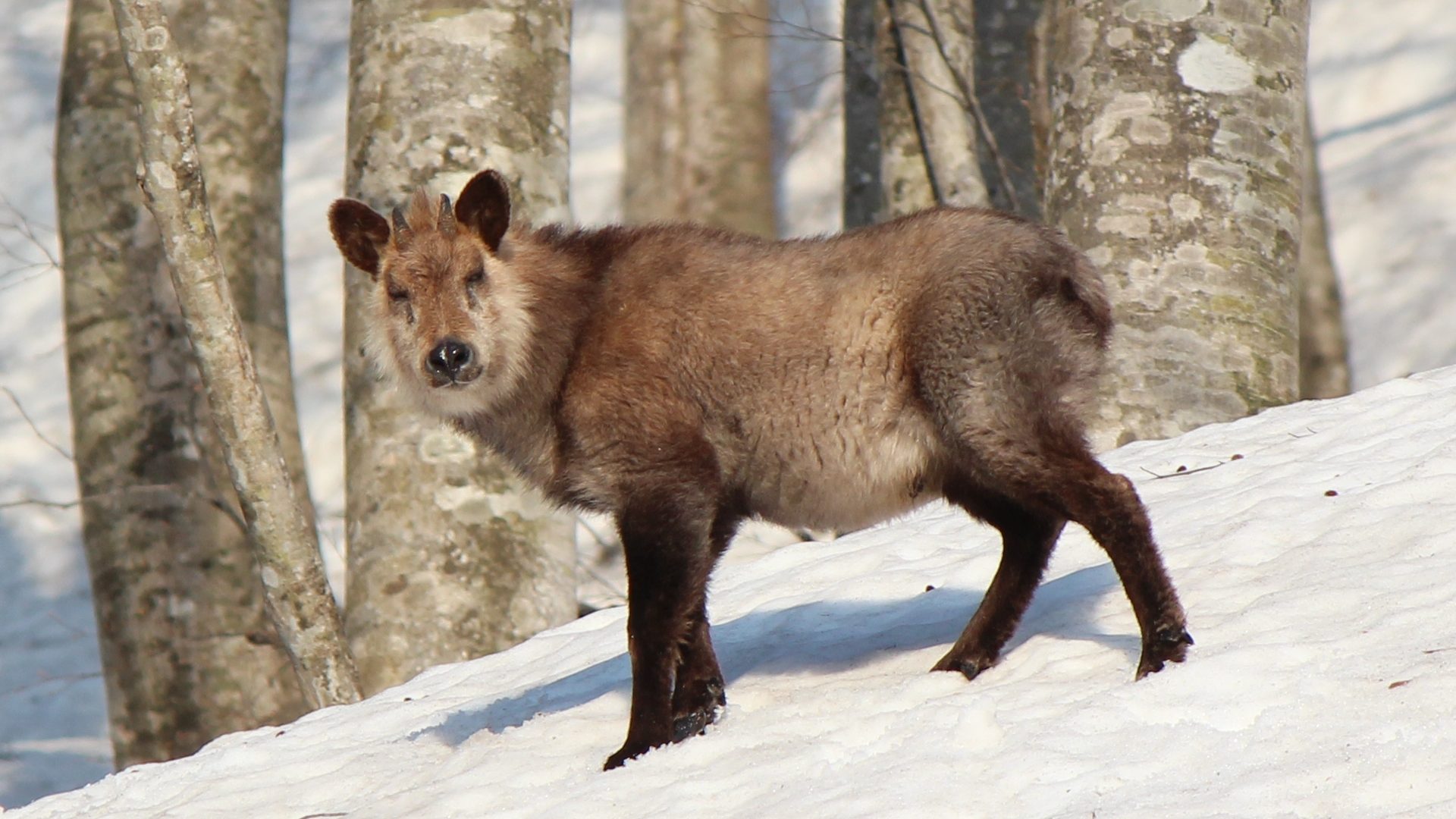
A Japanese serow (Capricornis crispus). © Alpsdake / Wikimedia Commons Even in its native range, the serow is often mistaken for a goat, a pig or a deer, and it looks just enough like any of those to make this understandable.
There are seven species of serow. They live in the Himalayas and on the forested slopes of Thailand and Sumatra. One secretive species even lives in the forests of Taiwan. But the most studied – and arguably, the cutest – lives in Japan.
The Japanese serow is territorial, with both males and females marking their areas with glands and scat, and defending those territories against encroachment. They are solitary creatures, getting together only to procreate. Young are run off by their mothers when they are old enough to defend themselves.
The Japanese serow nearly went extinct due to hunting, but in 1955, the country declared serows as a “Special National Monument,” granting it full protection. Conservation measures worked exceptionally well. This serow species thrives in dense forest, and the growth of Japan’s pine plantations actually provided great habitat.
The serow population grew to the point where there were conflicts with farmers and foresters; today their populations are controlled by culling and hunting. More than 100,000 animals now roam Japan. Read more about serow and other “goat antelopes.”
-
Takin
Budorcas taxicolor
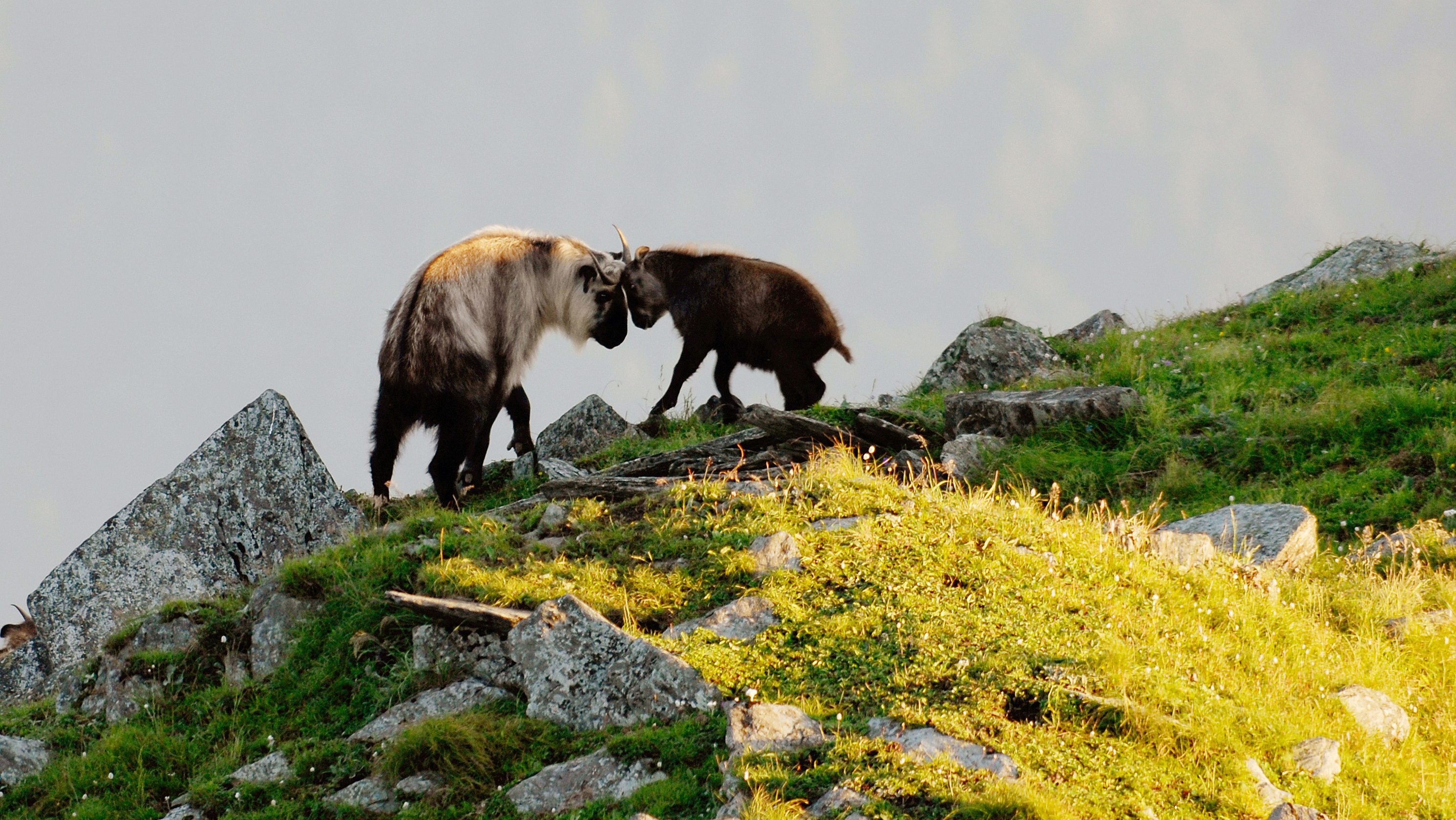
Takins (Budorcas taxicolor), a mountain-dwelling goat-antelope species found in south-central China. Photo © Deng Jianxin It looks like a creature Luke Skywalker might ride en route to saving the galaxy, but the takin is not a fictional beast. Still, writers confronting the takin invariably describe it as a creature composed by assembling parts of other animals. Many accounts describe it a creation of Dr. Seuss. Even famed biologist George Schaller likens the takin to a it as a “bee-stung moose” due to its super-sized schnoz.
The takin inhabits mountainous regions in India, Bhutan, China and Myanmar. It is perhaps the largest mammal that remains in obscurity (an adult takin can weigh up to 770 pounds).
Despite its bulk, the takin moves easily down steep mountain slopes and through thick bamboo forests. That big nose helps it navigate the cold, high-elevation air. The San Diego Zoo (the first zoo to exhibit takins in North America) reports that the “large, moose-like snout has big sinus cavities to warm up the air inhaled before it gets to the lungs. Without this adaptation, takins would lose a large amount of body heat just by breathing.” Read more about the takin.
-
Saiga
Saiga tatarica
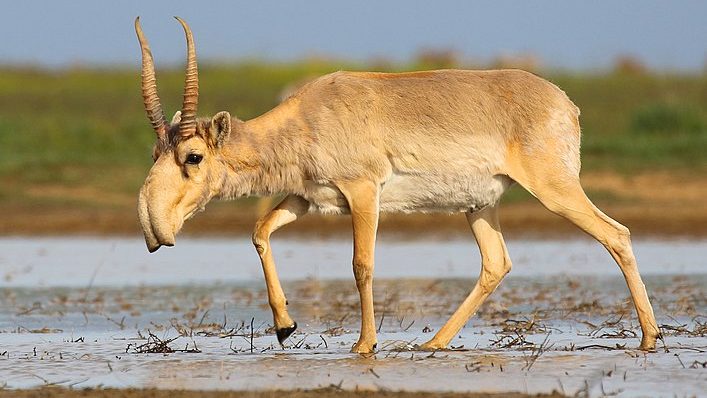
A saiga antelope. © Andrey Giljov / Wikimedia Commons You’re likely familiar with the Serengeti’s wildebeest herds and the caribou of the Arctic. But what about the saiga of Central Asia?
Until recently, millions of these antelope migrated across the Asian steppe, so numerous that many conservationists considered their populations secure. They are unique creatures, with a super-sized nose that allows them to heat air in winter and filter dust in summer.
Unfortunately, saiga populations declined more than 95 percent in 15 years, one of the fastest crashes of large mammals ever recorded, according to the Saiga Conservation Alliance. The economic downfall of the Soviet Union in the 1990s led to increased poaching for the saiga’s horns, valued for medicinal properties.
Then, in 2015, an extremely contagious virus called Peste des petits ruminants (PPV) dealt a further blow to saiga populations. More than 200,000 saiga died in Kazahstan due to this disease. Mongolia lost more than 50 percent of its saiga population. PPR also devastated livestock in a region where herding is important to local livelihoods.
A Science for Nature and People Partnership working group developed a framework to help eradicate the virus in five years, providing some hope for an antelope that still faces an uncertain future.
-
Wisent
Bison bonasus

A wisent in Germany. © Michael Gäbler / Wikimedia Commons Speaking of uncertain futures: In 1927, the global population of wisent was reduced to a dozen animals. Wisent are a European bison, and the story of its decline and comeback is perhaps even more dramatic than the oft-told story of North American bison.
By the 20th century, wisent had been reduced to just two herds in Europe, meeting the same fate as many large animals in Europe. World War I nearly wiped out the remaining animals. The survivors were rounded up and placed in zoos.
Careful breeding and management allowed wisent to be reintroduced to Poland’s Białowieża Forest. Today, that forest is home to 600 bison. And the animals are being reintroduced in rewilding projects in many other places, including the Netherlands, France, Germany and even the United Kingdom.
-
Kri-kri Ibex
Capra aegagrus creticus
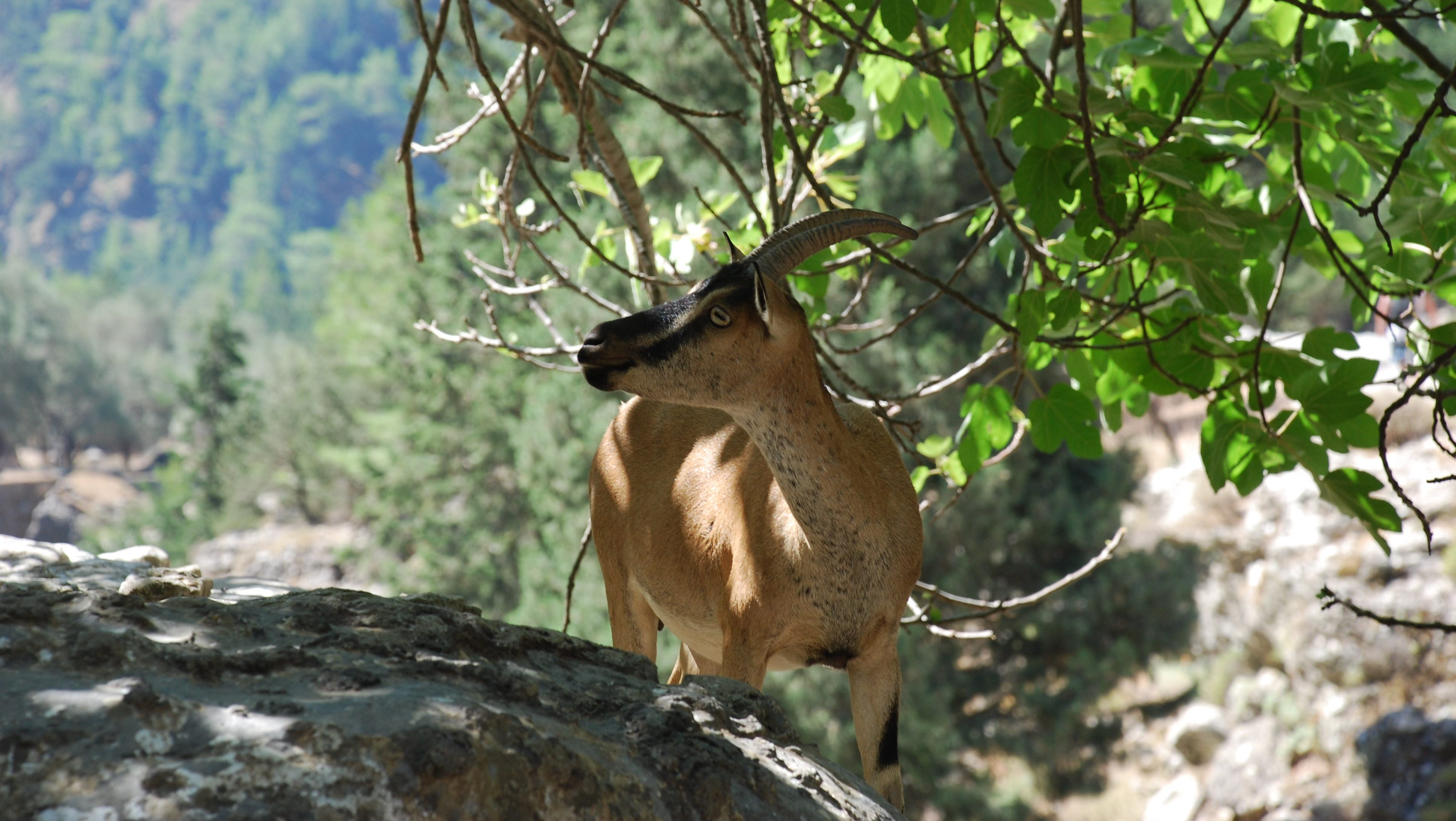
A kri-kri at Samaria Gorge, Crete. © Wannes / Wikimedia Commons The kri-kri ibex is found only on the island of Crete and a nearby islet, with introduced populations existing on two Grecian islands. Its core population on Crete is restricted to a 28-square-mile area of the rugged White Mountains. Also called the Cretan wild goat, it’s an impressive mountain creature, with horns swirling back, just like an ibex.
Long thought to be a distinctive wild goat subspecies on these islands, recent genetic research suggests otherwise. According to the CIC Caprinae Atlas of the World, the kri-kri ibex are descendants of domestic goats brought to the island by humans around 7,000 BC. As such, they represent an ancestral form to today’s domestic goats, and many believe they are worth preserving for this unique genetic lineage.
These wild goats today hybridize with domestic goats. Is this a conservation threat or just an expected outcome with feral livestock? As with so much in the Anthropocene, the lines between wild and domestic, and what we protect and why, are often blurry.
-
Gerenuk
Litocranius walleri
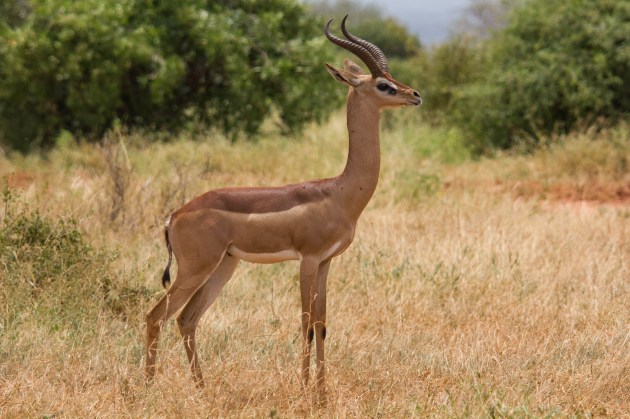
A gerenuk. © Peter Steward / Flickr Those lucky enough to go on an African safari want to see the lions and elephants and giraffes. But don’t neglect to look for other wildlife, including the tremendous diversity of antelopes. On my own trips, I’ve taken specific side trips to see out lesser kudu, bontebok, roan and other fantastic antelopes.
I’ve never seen a gerenuk, but it has to be one of the coolest African antelopes. Living in arid regions of eastern Africa, this animal has unique adaptations to help it browse in areas where vegetation is sparse. They have long legs, long upper lips and a notably long neck, all of which help the gerenuk reach up into trees to feed. While feeding the gerenuk stands up on two legs.
Gerenuk are probably best viewed in arid parks in northern Kenya, including at Nature Conservancy partner, the Lewa Conservancy.
-
Nilgai
Boselaphus tragocamelus

A nilgai. © Gaurika Wijeratne / Flickr Unlike many of the mammals on this list, the nilgai’s future is reasonably secure. It is a 600-pound, bluish Asian antelope that has benefited both from its adaptability and from human values.
Male nilgai have a striking bluish tint, with white highlights on the cheek and throat. They have two conical horns that are not as long as those of many antelope, but are still noticeable. Females and young are a tawny color and lack horns, but otherwise resemble the males.
Both male and female nilgai use “latrine sites” where they defecate regularly to demarcate territories.
In India, the heart of its range, it is considered a cow, and as such a sacred animal in the Hindu faith. In fact, “nilgai” derives from the Hindi nilgaw, meaning “blue cow.” They can be seen in national parks, but are also frequently sighted in farm fields and even suburbs. While habitat destruction is an issue, they’re not threatened with extinction.
And today, they also thrive in Texas. Yes, Texas. In 1930, they were introduced to the expansive King Ranch for hunting purposes. They thrived and expanded with a current estimated population of 30,000 animals. Read more about the nilgai.
-
Pere David’s Deer
Elaphurus davidianus
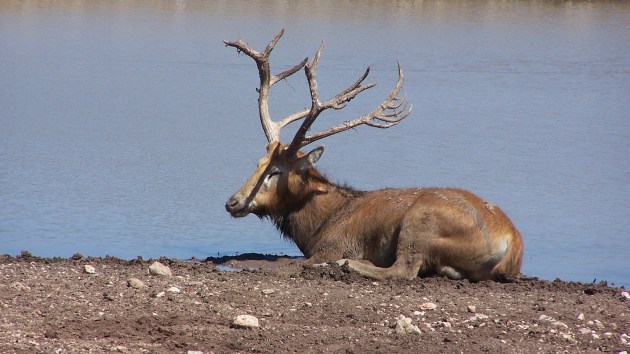
A Pere David’s deer rests in its modern habitat: a water hole on a Texas game ranch. © Matt Miller/TNC The Pere David’s deer may be the only wildlife species that was saved from extinction because someone violated a wildlife law.
In the 1860s, the population of this deer, also known as the milu, was likely restricted to just one preserve, the Emperor of China’s Imperial Hunting Park, a walled and carefully guarded park. No one was allowed to even look into it. A French missionary, Pere Armand David, just couldn’t resist taking a peak – an impulse perhaps many naturalists will find relatable.
He finally persuaded guards to give him a quick look, and that quick look revealed a deer with large, branching antlers and a distinctive long tail. David recognized its uniqueness, and thereby began diplomatic negotiations to secure a few animals for European zoos.
Those animals were brought to Europe. Meanwhile, the Imperial Hunting Grounds faced floods and political upheaval, which doomed the last milu. The Pere David’s deer in Europe were then relocated to Woburn Abbey, a British deer park where they thrived. They are now found in zoos and hunting ranches, and have even been reintroduced back to China. Read the full story of this remarkable deer.
-
Babirusa
Babyrousa sp.
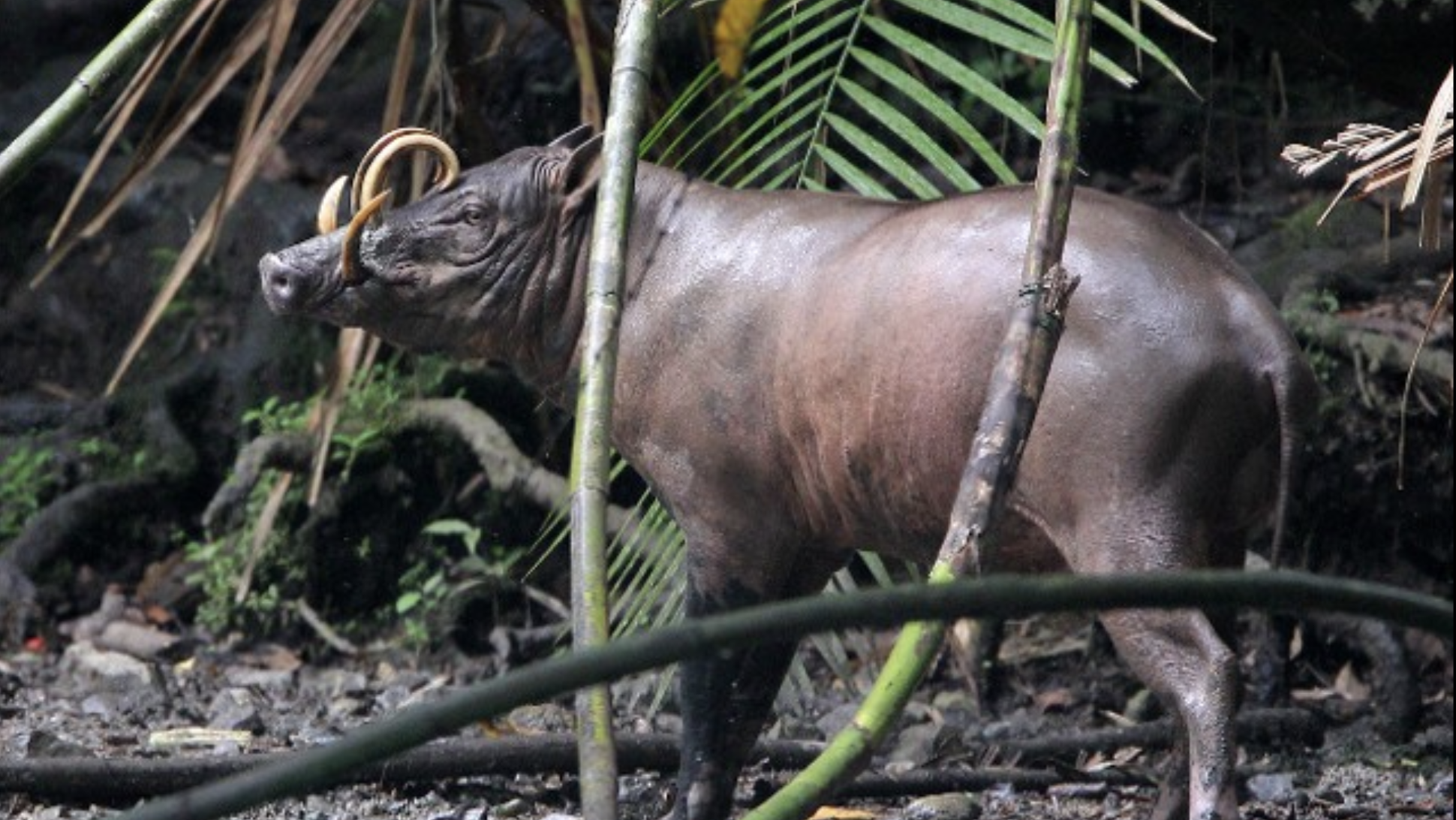
The babirusa roams the remote forests of Sulawesi and nearby Indonesian islands. Photo: Coke Smith, cokesmithphototravel.com With apologies to Wilbur of Charlotte’s Web fame, the babirusa is some pig. Found in isolated parts of the Indonesian island of Sulawesi as well as several nearby islands, the babirusa roams in large herds in the forest, and is now mainly restricted to protected areas.
Current taxonomic research suggests there are four babirusa species. The species on Sulawesi has such sparse hair it appears naked. And it has really spectacular tusks. It is those tusks that are the most notable feature of the animal. Only males have them. The two upper canines penetrate through the snout’s skin and curve back towards the forehead. The lower canines also grow upwards. The babirusa is the only mammal with vertically growing canine teeth.
Unsurprisingly, babirusa tusks have inspired a lot of folkore and tall tales. A popular story is that those upper tusks, if not worn down, eventually grow back into the skull, killing the unfortunate babirusa. This always seemed more tall tale than biological reality.
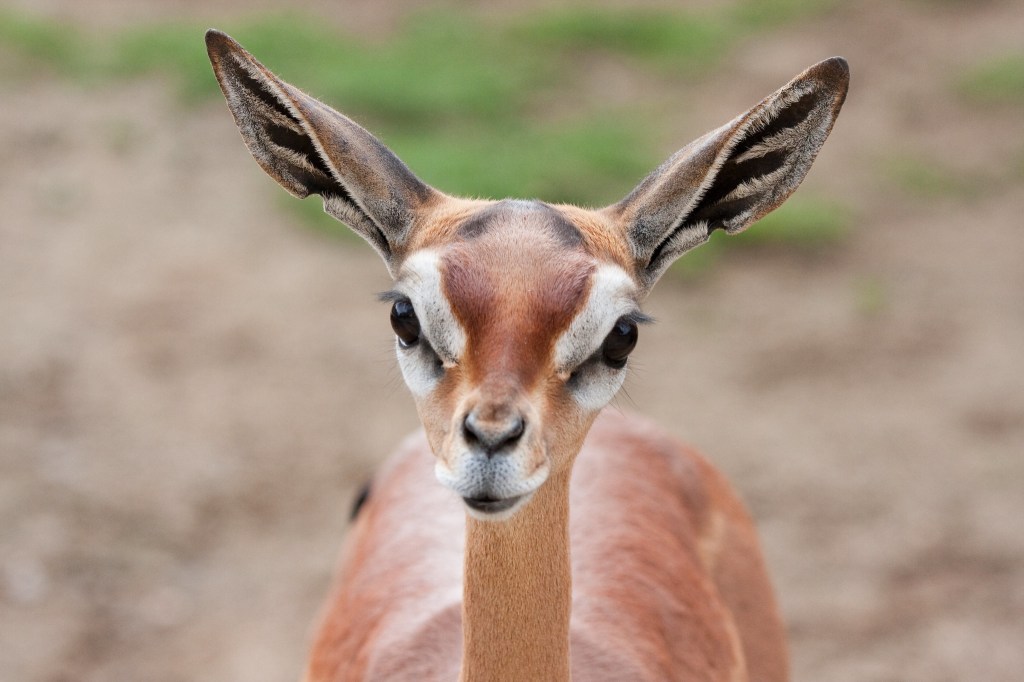



These animals are hilarious. The Saira, gerenuk, and nilgai look like creatures from the mind of Dr. Seuss!
Very interesting. If you want to see babirusas, takins, and gerenuks, come to the San Diego Zoo or the SD Zoo Safari Park. I especially like the gerenuks with their impossibly thin legs and markings that evoke the old two tone auto paint jobs of the 50’s and 60’s.
Wonderful.
Thanks for this. You need to make this a featured article. I’m sure many animal-lovers would enjoy the read. And more photos, please.
Ps. Do you know if any of these are present at the San Diego Zoo?